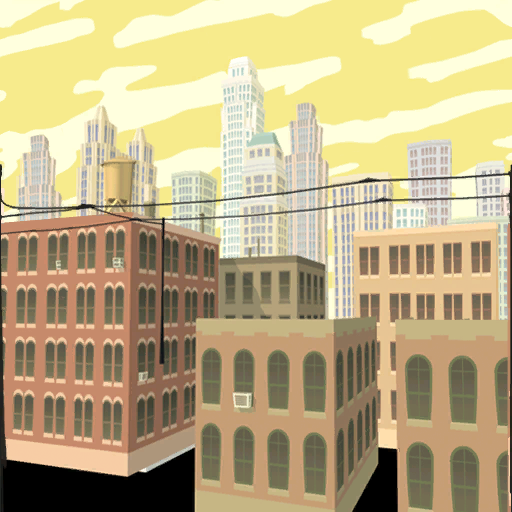The next step in the Freelance Police roombox is to prepare the walls that will get covered up by the false walls. I used a fan-made program named Telltale Explorer to extract the texture that displays outside the office windows in Telltale’s games.

I started by printing it in black and white, to see how it fit. It’s not wide enough to span the whole back wall, so I had to repeat the image. It’s also not tall enough, so I clipped a sky section out of another texture to go at the top.

When the windows are in place, it all blends together.

I printed out the graphic on photo paper, sprayed it with UV-resistant matte sealer, and left it to dry for 24 hours. The paper is glossy, but the spray is matte so that took the gloss away.

Next I painted the areas behind the doors and the rat hole. Outside the office door, I used a shade of gray similar to the office window in Telltale’s version of the game. Initially I painted the closet area black, but after looking at the closet in the game I realized it should be the same color as the wall.

I also realized the brick red I used for the base looks nothing like the brick paper I bought for the back of the roombox, which is more orangey. So I repainted the base and the closet wall area with a Behr paint sample called Harvest Brown, which I’m also planning to use for the walls (pictures are farther down in the post).

Next I stained the windows and closet door.










 Emily is a freelance writer, miniaturist, and adventure game enthusiast.
Emily is a freelance writer, miniaturist, and adventure game enthusiast.

